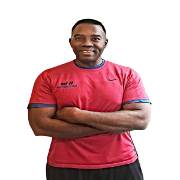Ladies, take care of your bodies and don't let your bones and muscles waste away as you move through the decades of your life! Below, you will find some general fitness guidelines to follow:
Ages 18-35
Your #1 goal during this stage of life is to achieve peak bone mass. One good way to do this is to include high-impact exercises in your program, such as jumping rope, running, high-impact aerobic dance, basketball, volleyball, soccer and gymnastics. Also important, are high-intensity weightlifting with free weights or dumbbells.
Ages 35-50
Primary goals in this age group are to maintain bone mass and improve coordination and balance. MENOPAUSE ALSO BECOMES AN ISSUE. According to information in About.com, menopause isn't the only cause of middle-age spread. Other factors include reduced activity, decreased metabolism, increased calorie intake and genetics. THE SIMPLEST WAY TO EASE INTO MENOPAUSE IS TO EXERCISE, ACCORDING TO THE AMERICAN COUNCIL ON EXERCISE. Exercise helps ease symptoms, maintain bone mass and improve balance among other benefits.
Ages 50+ and post-menopausal
Follow the same guidelines for ages 35-50. If you have osteoporosis, get medical approval for your exercise choices and follow these general guidelines to protect your spine and avoid falls: 1) avoid impact exercise, 2) avoid spinal flexion (bending forward) and spinal rotations (twisting the torso), 3) Discontinue (or get medical approval) for jarring sports such as bowling, tennis and basketball and 4) use lighter weights during resistance training and work your way up to more challenging training.
Ages 70+
Balance exercises are critical for this age group. Continue to follow the same guidelines as the 50+ age group in order to protect your spine.
It doesn't matter if you're 40 years old or 75 years old. If you don't build muscle, you'll lose muscle. Exercise and fitness will help you to increase the range of movement, increase lean muscle, strengthen bones, muscles, tendons, ligaments, improve your ability to do everyday activities, improve health, help prevent accidents, injuries, and sickness, and speed up rehabilitation.
Resistance training helps women tone, shape and strengthen muscle fibers, minimizing the "fatty marbling" within the muscle that results in flabby, weak muscles. In addition, not only will you increase lean muscle mass and overall body tone, but the benefits of exercise also include increased metabolic rate and increased bone density.
Women who exercise on a regular basis with both resistance training (weight lifting) and cardiovascular exercise are able to perform more work without tiring and are less likely to sustain fractures resulting from osteoporotic conditions.
So, what happens when the body you once knew begins to acquire a different shape and doesn't respond to activities and physical exertion as it once did when you were 20 years old? Unfortunately, you can't change the fact that you'll age, but you can control, to some degree, the rate at which you age.
A lot of women unwisely decrease their activity level as they grow older, assuming it's proper to grow old gracefully. Regrettably, they grow old ungracefully, with considerable restrictions on their mobility, self-reliance and quality of life.
From adulthood into middle age, you will lose approximately 6.6 pounds of lean muscle mass during each decade of life. Numerous studies indicate that muscle mass may decline by 20% to 40% between age 20 and age 65, unless you take measures to slow muscle loss. So, it is critical to continue a regular strength training program throughout your life.
Mark Dilworth, BA, PES, CPT
Her Fitness Hut http://herfitnesshut.com






Add a CommentComments
There are no comments yet. Be the first one and get the conversation started!